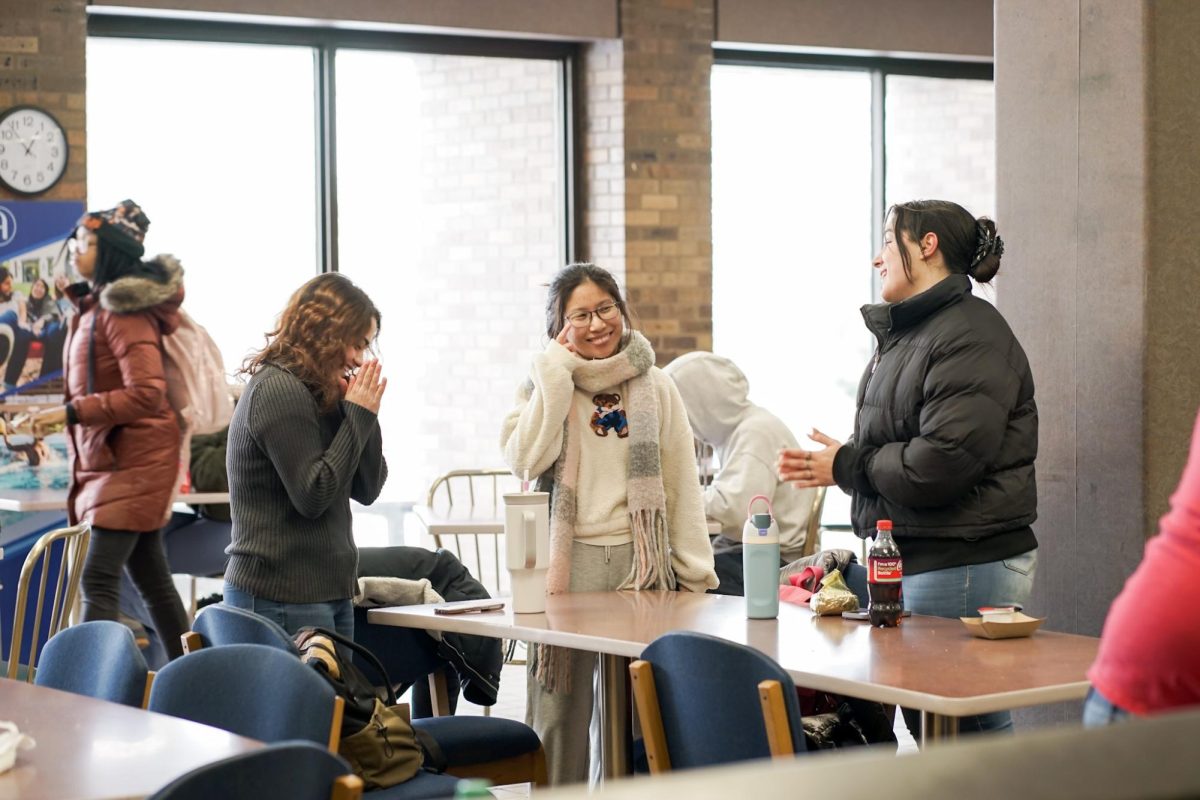This term, the Augustana College Teaching Museum of Art welcomes a brand new exhibit in celebration of 30 years of Women and Gender Studies at Augustana College. Dr. Claire Kovacs, director of the museum, came up with the idea for this exhibit about a year ago, and since then has made her dreams a reality. “Augustana is one of the first Lutheran schools to have a gender studies program, so I felt this was an anniversary worth commemorating,” says Kovacs.
This exhibit is unique because it is composed of works by two artists: The Guerrilla Girls and Kiam Marcelo Junio. In the upper gallery, visitors will see “A Woman’s Place is in the Gallery: Guerrilla Girls, 1985-2015,” and in the lower gallery, “Battle/Dress: Camouflage as a Metaphor for Passing and Other Works by Kiam Marcelo Junio.”
“The Guerrilla Girls are an anonymous collection of feminist artists, and their work is typically seen as street art. It can be very in your face, which makes it unique to a gallery space,” explains Kovacs. Their work typically deals with social justice and equality, issues that were relevant when the Guerrilla Girls formed in 1985, but are still relevant today.
On the other hand, Kiam Marcelo Junio’s work tackles the issues of gender identity. Their work is displayed through a video exhibit, and can be a bit more difficult to grasp, according to Kovacs.
“Once you realize that Junio spent seven years in the navy, you start to get it more. They focus on camouflage in nature, the navy, and in camouflaging your true identity, which Kiam experienced as a gender fluid individual serving in the navy during the don’t ask, don’t tell period,” says Kovacs.
Augie Alum, Samantha Turner, who is studying museum studies at Western Illinois University, assisted Kovacs with the exhibit over the summer. She says, “I think this exhibition is important for students, and really anyone, to see because the conversations it can spark are so important. The audience is challenged, both by the subject matter of the art and by what they will read in some of the labels. It asks some challenging questions and brings up important topics that don’t necessarily make it into everyone’s everyday conversations.”
The exhibit is free to the general public, and open Fridays and Saturdays from 12-4pm. Kovacs says they’re not charging admission because “It’s an important exhibit for people to have access too. It really challenges the way we think.”








































































































